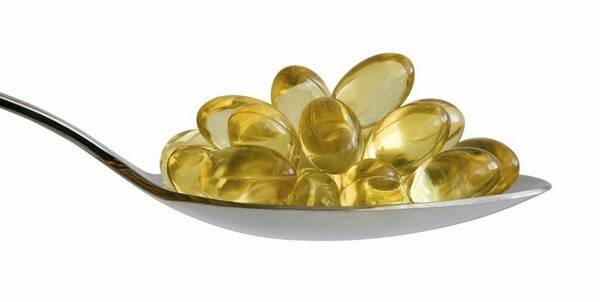Polyunsaturated fatty acids Omega-3 are not produced in the human body, but come along with food. A high concentration of these biologically active substances is found in oily fish, vegetables, nuts. But quickly and effectively eliminate the resulting deficiency of polyunsaturated fatty acids will help only the course of taking pharmacological drugs and dietary supplements in solid dosage forms. Before taking Omega-3 capsules, you should consult your doctor about the safety of their use. After the examination, the doctor will prescribe dosages and determine the duration of therapy.

. Application features of
The average dosage of omega-3 per day for adults is 3 g of polyunsaturated fatty acids. During the purchase of biologically active additives in the pharmacy, you should pay attention to the content of the active ingredient in one capsule. It can vary significantly from one manufacturer to another. When choosing a medicine, preference should be given to dietary supplements with a concentration of polyunsaturated fatty acids above 30%.If their content is significantly less, then it is better to refuse to purchase, otherwise you will have to take 20-30 capsules per day. How it is possible to calculate the necessary daily norm of Omega-3 for adults:
- capsules 0,5 g - 6 pieces;
- capsules 1.0 - 3 pieces.
Doctors recommend a three-time daily application: after breakfast, lunch and dinner for 2 or 1 capsule. But dosages can be increased with active sports or hard physical work. Children from years should be given only capsules containing 0.5 g of Omega-3 per piece per day, unless the pediatrician has prescribed a higher amount of polyunsaturated fatty acids. Biologically active supplement should be taken only after meals and washed down with pure non-carbonated water. The average duration of the therapeutic course is 2.5 months.

When not recommended to take dietary supplements
Contraindications and side effects of Omega-3 determine the bioactive compounds from its composition. If a person has an individual intolerance to any of the polyunsaturated fatty acids, the use of even one capsule of dietary supplements will cause a sensitization reaction. Some people diagnose a sensitivity not to Omega-3, but to the auxiliary components for the formation of gelatin capsules.
Tip: Do not buy Omega-3 in a pharmacy without a doctor's prescription. It is possible that useful substances in the right amount enter the human body together with food, so there is no need to expose the liver to excessive loads.
Contraindications
Gynecologists do not recommend taking omega-3s during pregnancy, especially in the first trimester of pregnancy. And pediatricians warn of the danger of taking capsules during lactation. Even if there is no allergy to Omega-3 in a nursing mother, there is no guarantee that the baby will not develop a rash and itchy skin. Absolute contraindications for the reception of gelatin capsules include the following pathologies:
- open form of tuberculosis;
- recurrences of chronic pathologies;
- severe liver and urinary system diseases;
- predisposition to bleeding or their presence( hemorrhoids, poor blood coagulability);
- pathology of endocrine glands.
Omega-3 capsules should not be given to children under seven years, not only because of the high concentration of bioactive compounds, but also because of the difficulty in swallowing them.

Overdose
Many patients ask doctors about whether it is possible to drink Omega-3 constantly. Doctors warn that polyunsaturated fatty acids have the ability to accumulate in tissues. Prolonged regular reception provokes hypervitaminosis, the main symptoms of which include the following pathological conditions:
- dyspeptic disorders - nausea, vomiting, diarrhea;
- headache and dizziness;
- pain in the cardiac region;
- tremor of upper and lower extremities;
- urination disorders.
Overdose of Omega-3 can lead to prolonged bleeding even with a normal cut.
Warning: In case of hemorrhoids, anal fissures, profuse menstruation, a person's dangerous condition arises. With an overdose of Omega-3, blood begins to flow into the cavity of the internal organs, bone and cartilaginous tissues, which leads to the development of an acute inflammatory process.
